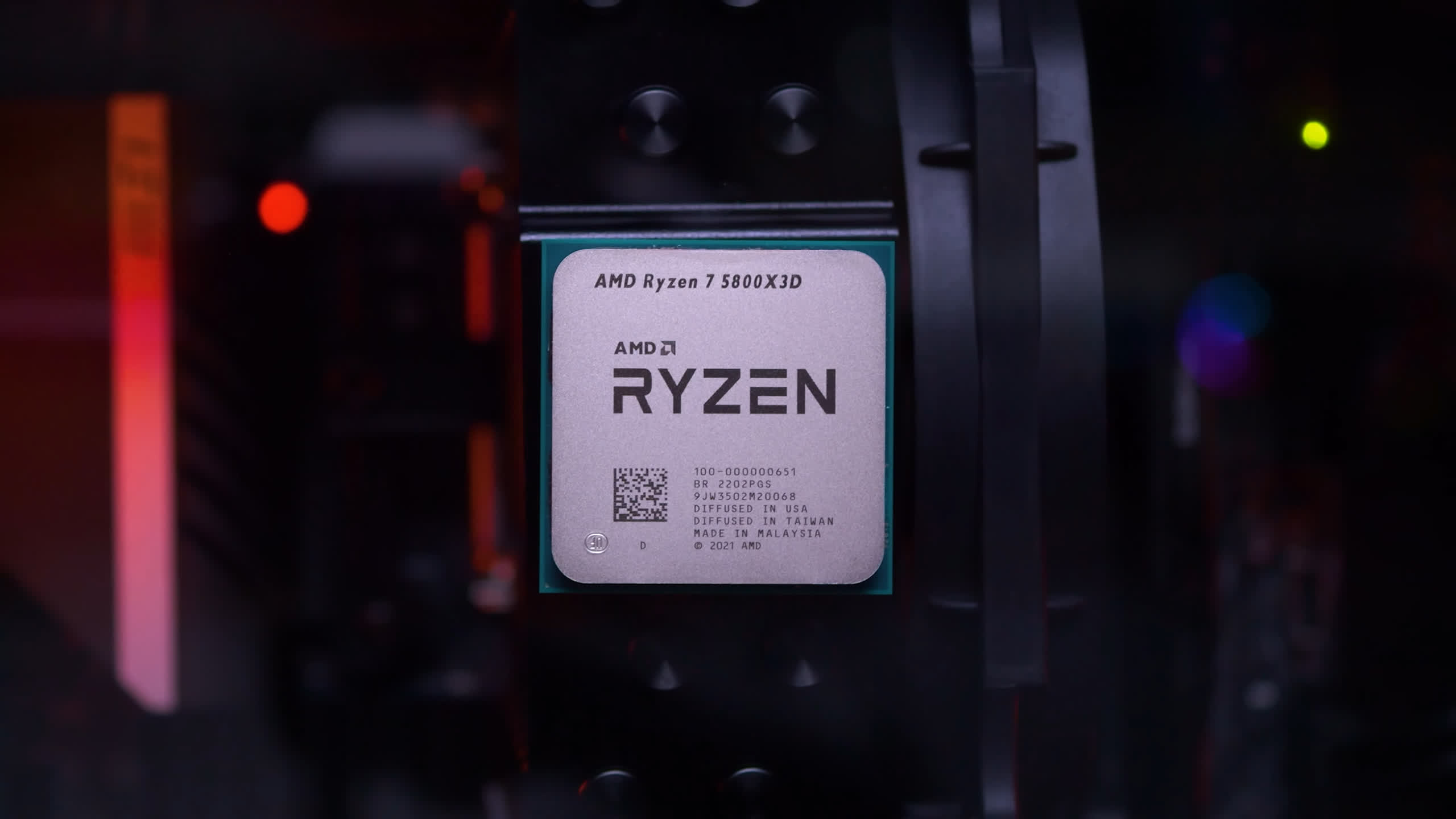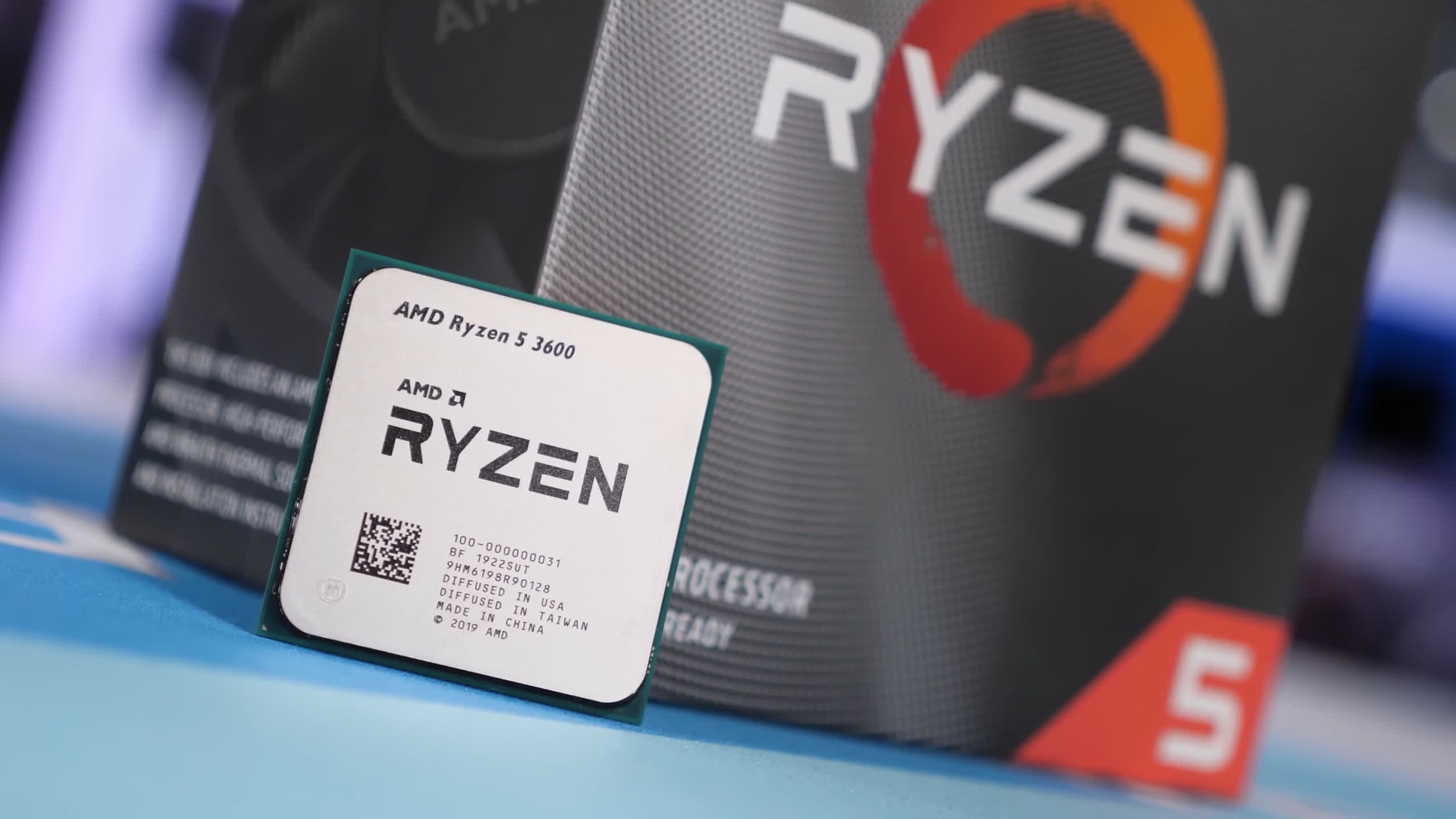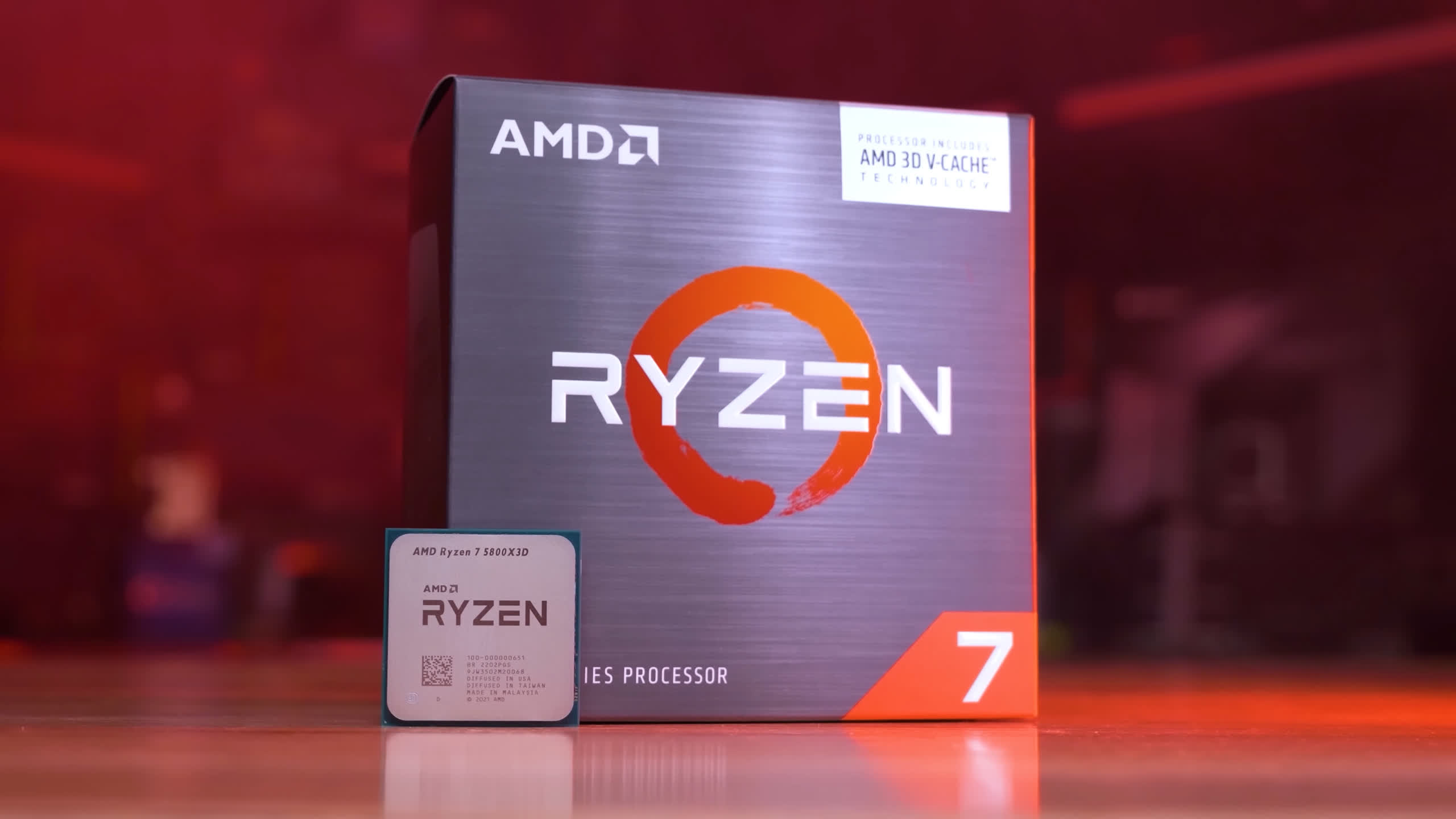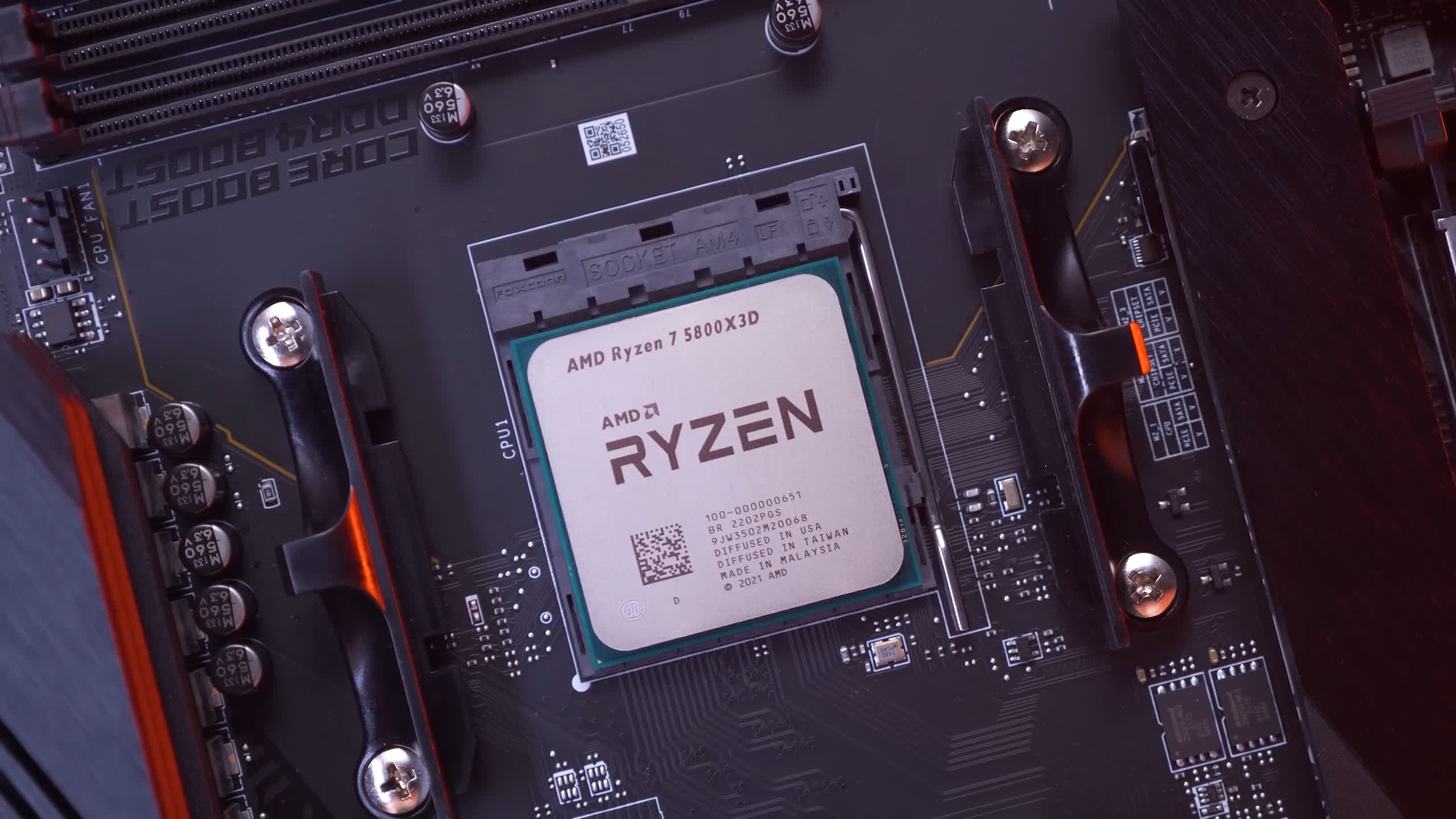We've already looked at the Ryzen 7 5800X3D in detail, from our day-one review to numerous comparisons with other high-end AMD and Intel processors, but still missing from all of that has been older Ryzen 5 parts, parts that many of you are still using.
Going from user feedback, it sounds like many are planning a final AM4 upgrade and the gaming crowd may be most interested in going all out on the 5800X3D, which can currently be had for $428 or slightly below the MSRP, and we already know it's a cracking good gaming CPU.
Today we'll be comparing it against the Ryzen 5 3600 and for good measure we'll also throw in the Ryzen 5 5600 data we had already collected as well.
For testing we'll be covering 23 games runnings at 1080p and 1440p resolutions using both a Radeon RX 6950 XT and Radeon 6600 XT with SAM enabled.
The motherboard used for testing is the old MSI B350 Tomahawk using the latest BIOS revision based on the AGESA 1.2.0.7 microcode, which enables Resizable BAR along with support for Ryzen 5000 series processors. Then we have 32GB of DDR4-3200 CL14 dual-rank dual-channel memory, and this same configuration was used for testing all Ryzen processors.
With those details out of the way, let's go over about a dozen of the games tested and then we'll take a look at the 23 game average. Let's get into it...
Benchmarks
Starting with CS:GO, we find that the 1% lows of the 5800X3D are improved by 81% from the 3600, while the average frame rate was boosted by 55% from 245 fps up to 380 fps. We've heard that more serious Counter-Strike players like to target over 300 fps, so if that happens to be you, then the 5800X3D will be a worthwhile upgrade.

It's also interesting to note that although the 5600 and 5800X3D are much closer when it comes to average frame rate performance, the 3D V-Cache model still boosted 1% lows by a massive 55% margin.

Moving on to Assetto Corsa Competizione, we find that the 5600 offers a reasonable step forward from the 3600, increasing the 1% lows by 22% and the average frame rate by 25%, margins that were once considered massive. But they pale in comparison to what's seen with the 5800X3D, get this, it increased frame rates from the 3600 by 95% with the 6950 XT at 1080p, complete madness.
Even with the Radeon 6600 XT installed, we're looking at gains between 90% and 100% at 1080p and even up to 60% at 1440p.

Moving on to Cyberpunk, which is a title that's typically GPU limited well before CPU performance becomes an issue, at least when running a modern processor. That said, using the 6950 XT at 1080p saw the 5800X3D race ahead by up to a 55% margin, hitting 171 fps on average.
Although the game became far more GPU bound at 1440p, the 1% lows were still 30% greater using the 3D V-Cache part when compared to the 3600, and it wasn't until we hit 1440p with the 6600 XT that the margins closed up to basically nothing.
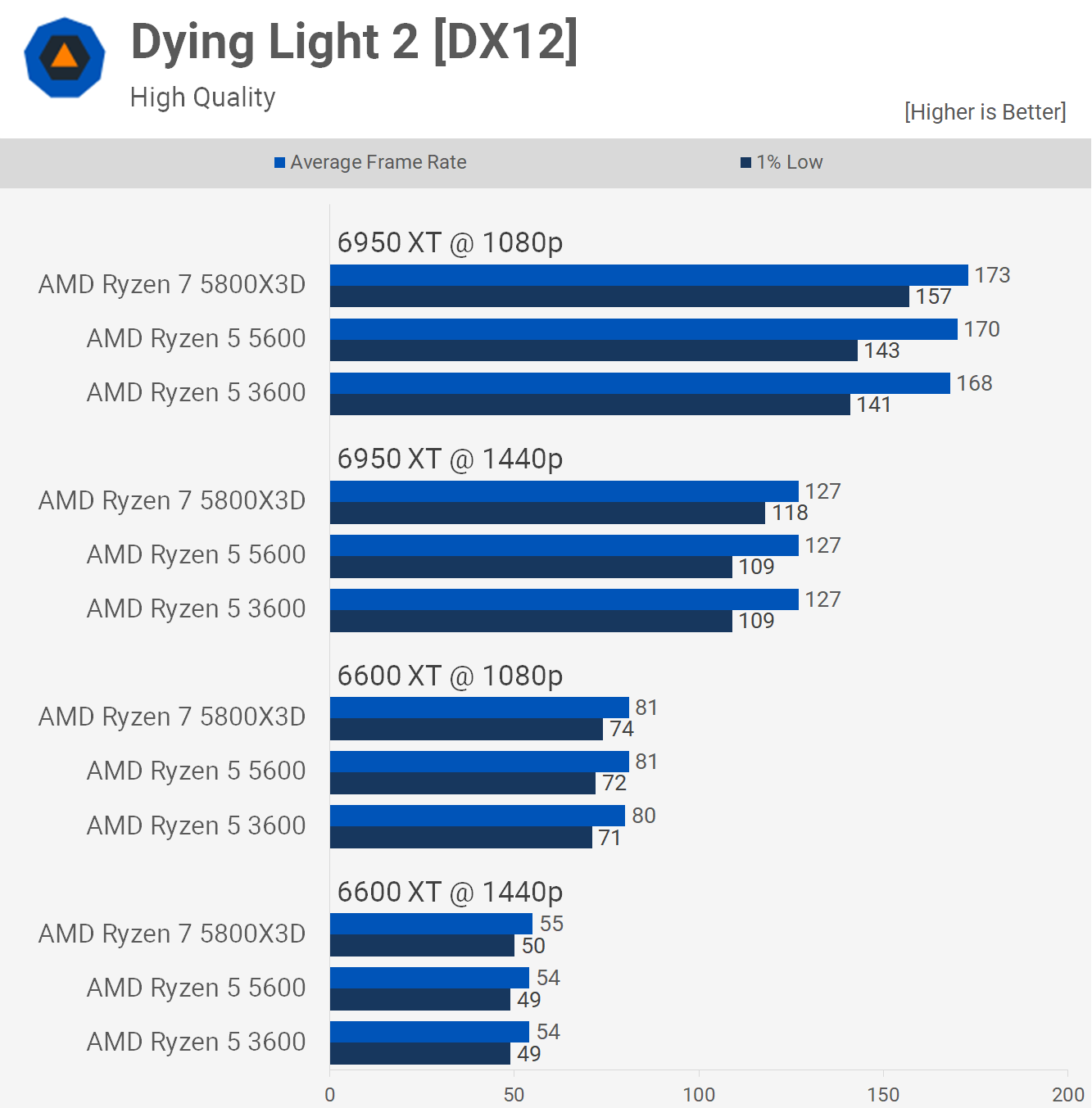
Dying Light 2 is a single player title that relies heavily on GPU performance and therefore doesn't lean on the CPU all that much. In extreme conditions, the 5800X3D was able to improve 1% lows, but really the Ryzen 5 3600 is more than sufficient for this sort of title. So depending on the games you're playing the upgrade won't always be significant, or an upgrade at all.

F1 2021 plays very well on the Ryzen 5 3600, but if you're after even more performance the 5600 will probably have you covered. But if you want to go all out the 5800X3D is seen here delivering up to 111% more performance with the Radeon 6950 XT at 1080p, incredible really.
Even with the 6600 XT we're still seeing up to a 47% boost at 1080p, and then just a 9% bump at the much more GPU limited 1440p configuration.
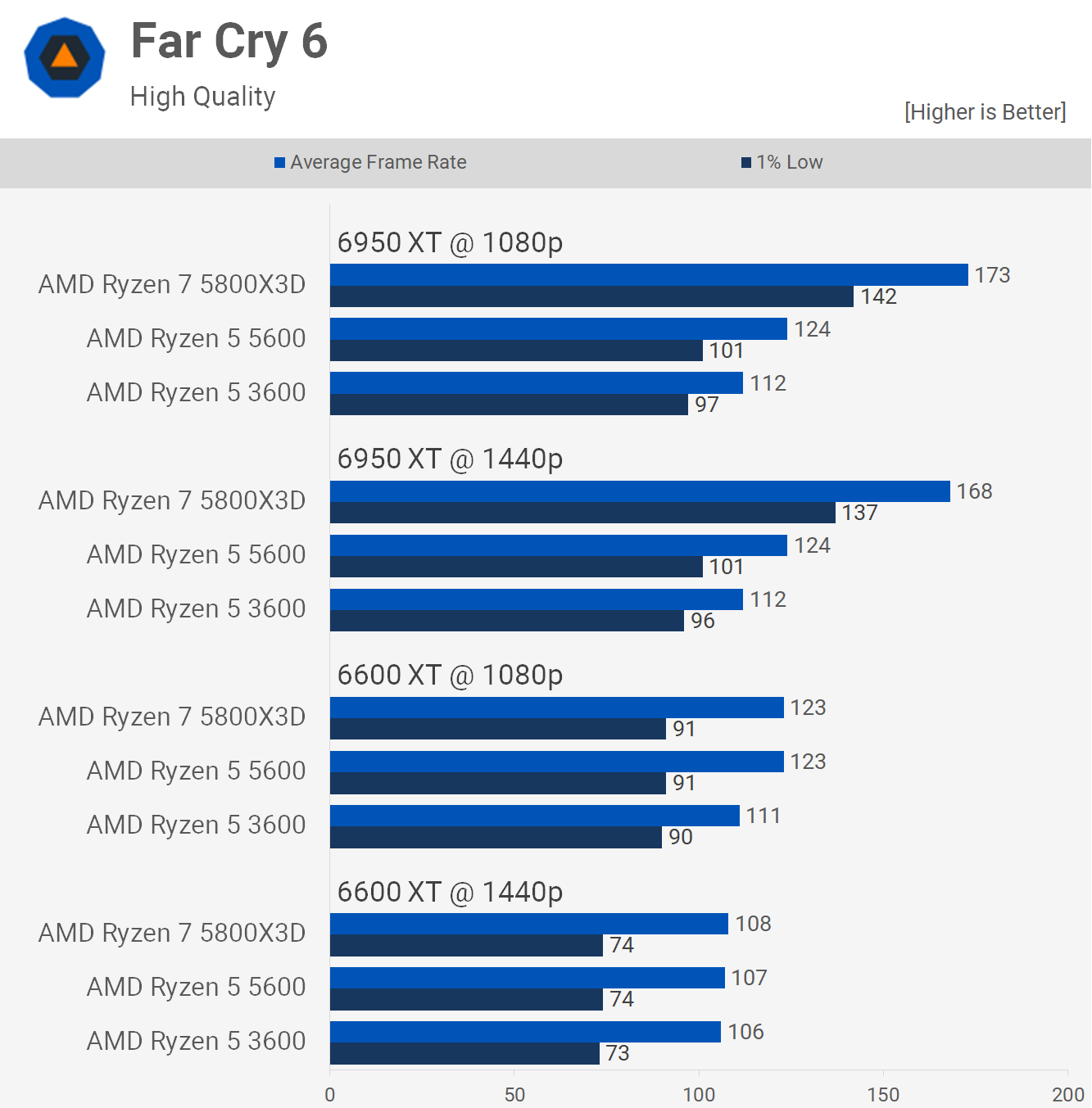
Far Cry 6 is an unusual game, or rather not a well optimized game we should say, as it only very lightly utilizes the CPU, causing an artificial CPU bottleneck. The extra L3 cache of the 5800X3D does help to extend performance further though, whereas the 5600 isn't an upgrade for 3600 owners. Using the Radeon 6950 XT at 1080p saw the 5800X3D deliver up to 40% stronger performance.
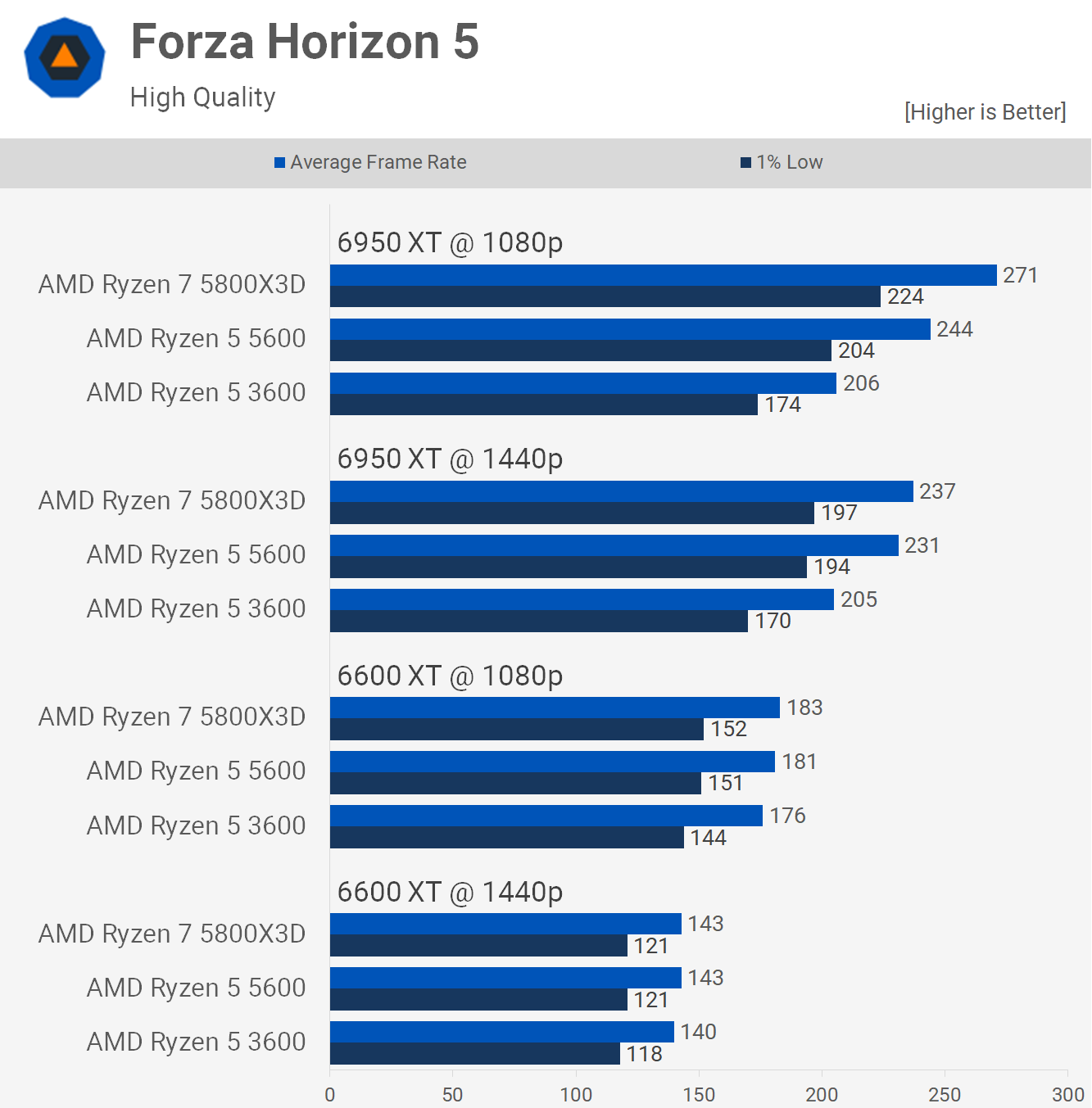
Forza Horizon 5, like Dying Light 2, isn't a CPU intensive game, but unlike Far Cry it doesn't need to be. The Ryzen 5 3600 is very capable here, driving over 200 fps with the 6950 XT at both 1080p and 1440p.
The 5800X3D was still up to 30% faster, hitting 271 fps on average with 1% lows of 224 fps. That margin is reduced to 15% at 1440p and then we see very little difference between them when using the 6600 XT.
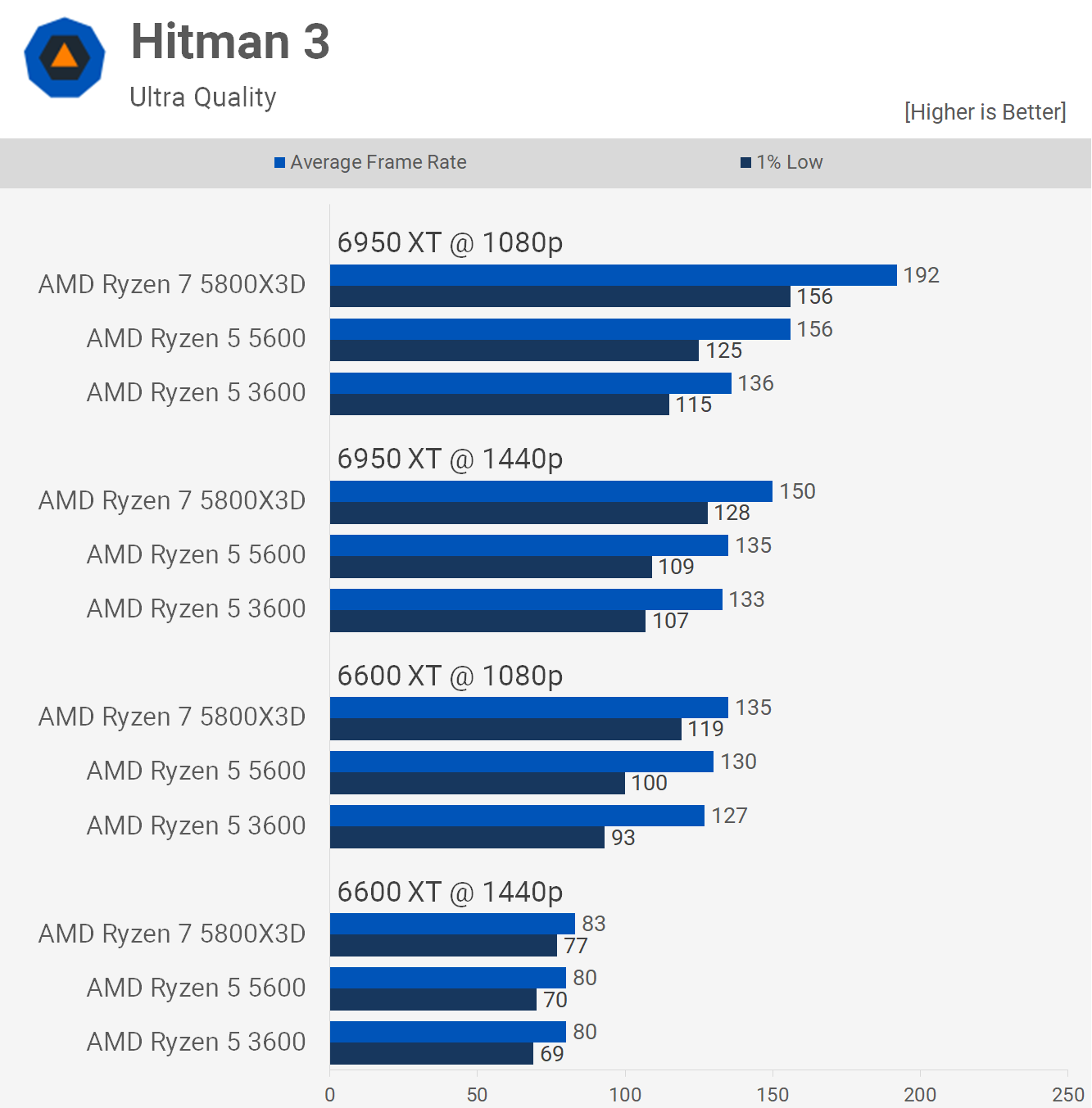
Moving on to Hitman 3, this is another game that doesn't needs hundreds of frames per second, but if you're wanting to get as many fps as possible you'll appreciate the 5800X3D as it was 41% faster than the 3600, seen when comparing the average frame rate.
At 1440p the 5800X3D was 20% faster, seen when looking at the 1% lows. Interestingly, that margin opens up to 28% with the Radeon 6600 XT at 1080p and we even see a 12% performance advantage at 1440p for the 5800X3D.

The Riftbreaker is a CPU demanding game that's particularly sensitive to cache performance. As a result, the 5800X3D was up to 106% faster than the 3600, seen when comparing 1% low data at 1080p with the 6950 XT.
With the Radeon 6600 XT, the 5800X3D still enabled up to 73% greater performance and even 42% stronger performance at 1440p.
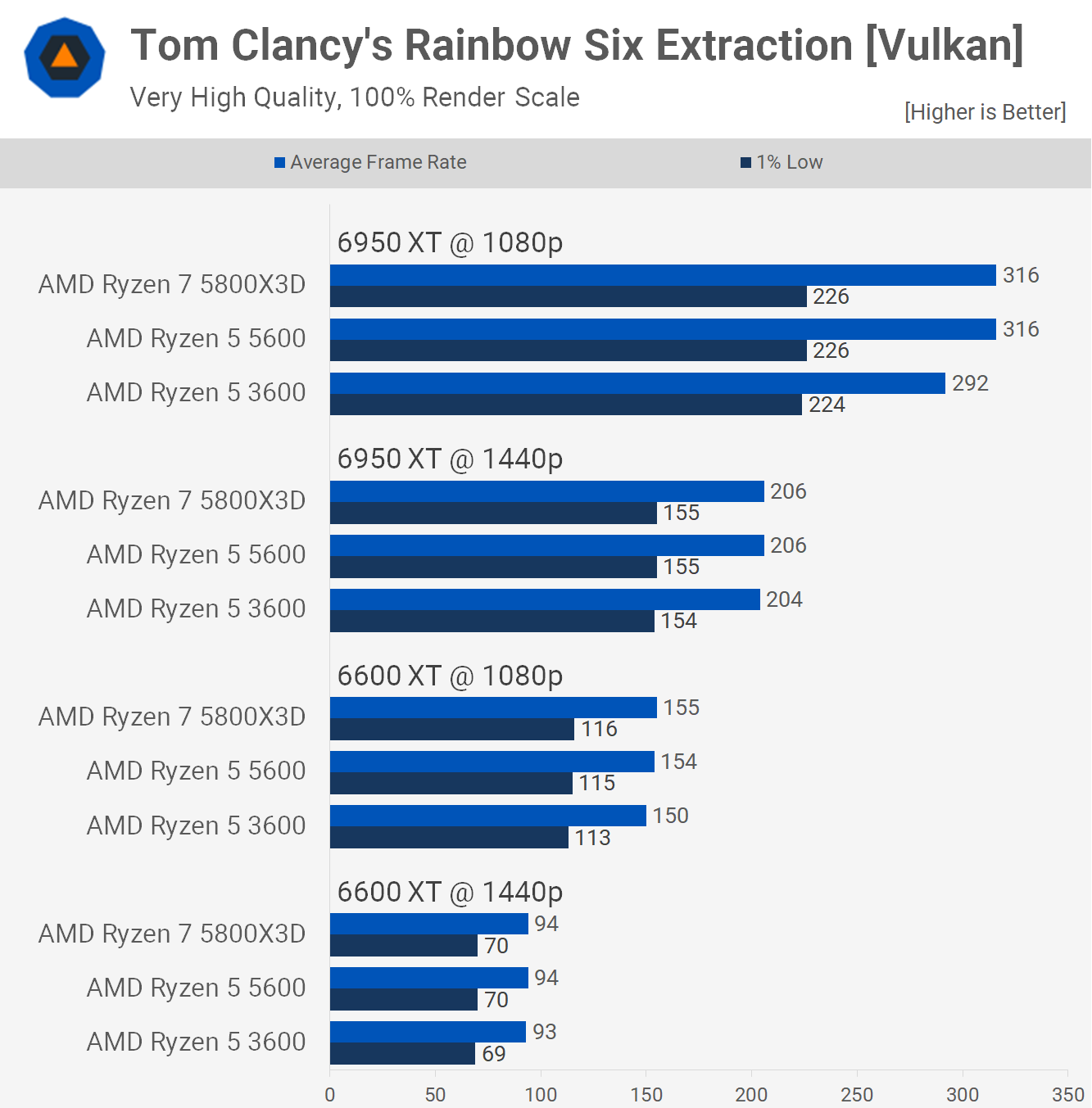
Rainbow Six Extraction can play at hundreds of frames per second even with the Ryzen 5 3600, so the 5800X3D has little to offer in exchange. We're almost always GPU limited and those limits are found at extremely high frame rates, so any of these CPUs should work well for this title.
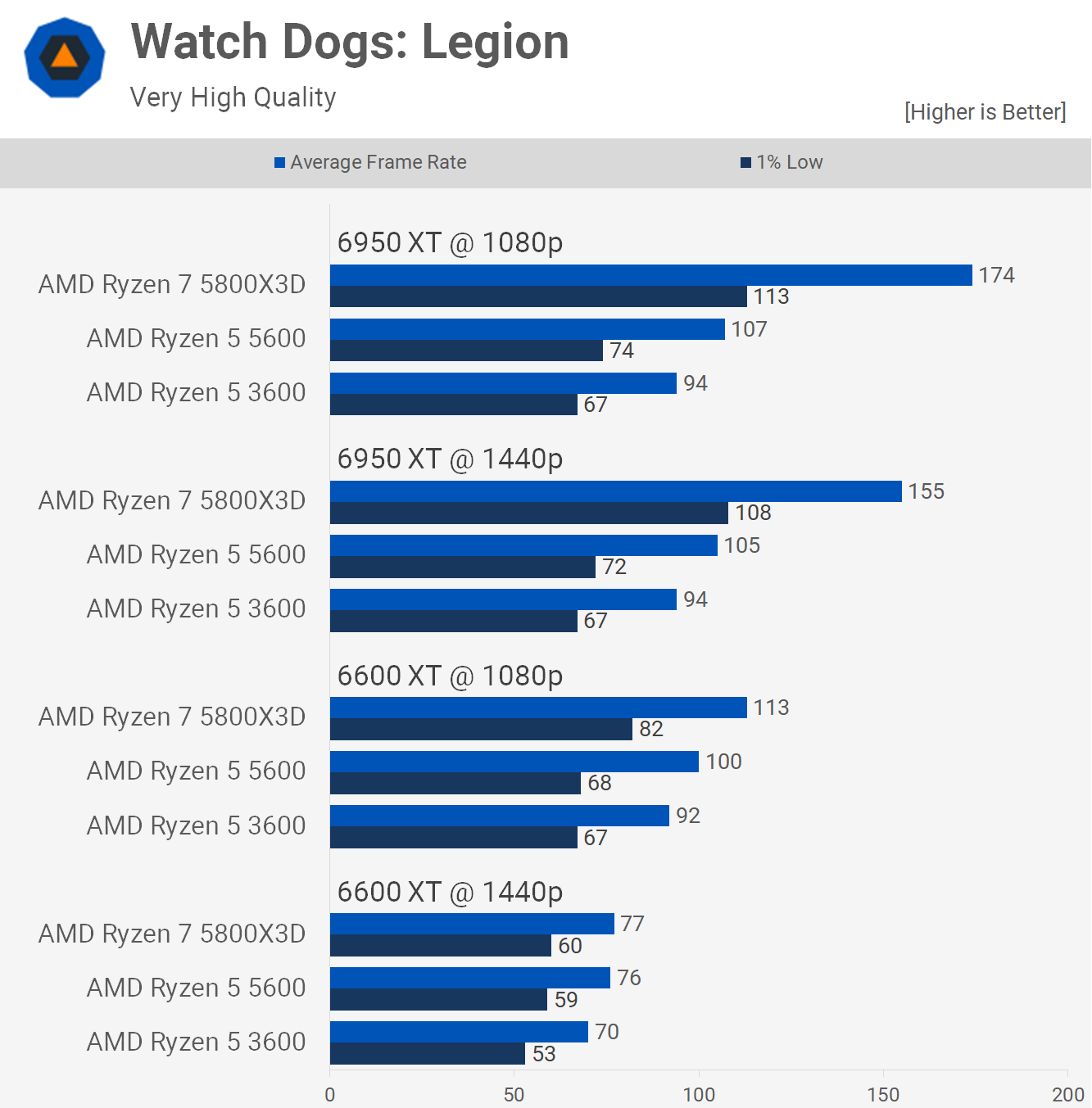
Watch Dogs Legion is a CPU demanding game and we see that while the 5600 was 14% faster than the 3600, the 5800X3D is up to 85% faster, pushing the average frame rate for the 6950 XT at 1080p out to 174 fps.
Even at 1440p, the 5800X3D was 65% faster, though the margin did shrink to 23% with the 6600 XT at 1080p.
23 Game Average
When CPU limited, the 5800X3D offers Ryzen 5 3600 owners massive performance gains. Using the Radeon 6950 XT at 1080p we see on average 48% greater 1% lows, with average frame rates boosted by 46%. Even at 1440p, the 5800X3D provided up to 35% greater performance on average.
As you'd probably expect, the margins with the Radeon 6600 XT are greatly reduced, but even so at 1080p the 5800X3D was on average up to 24% faster, but then just 13% faster at 1440p.
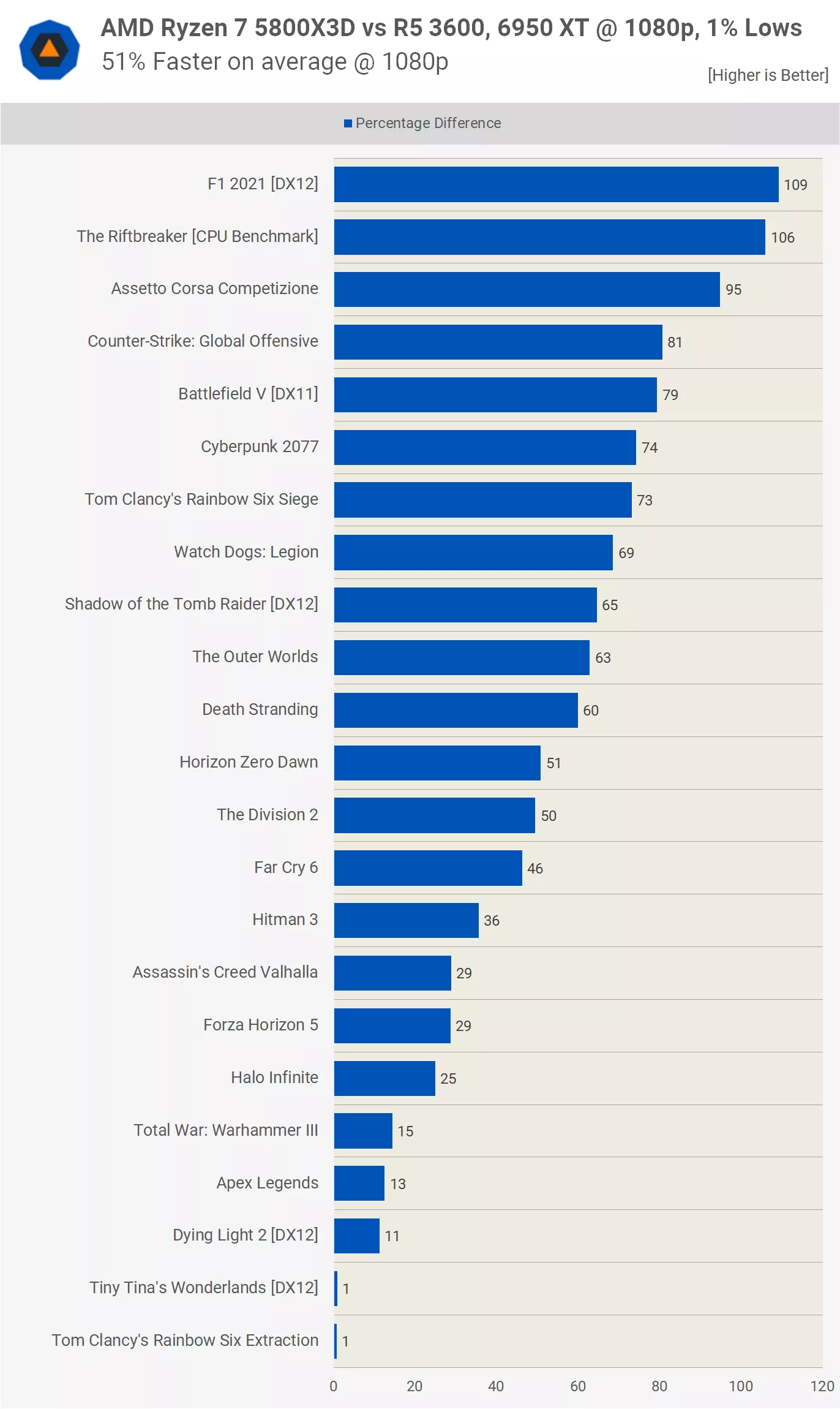
Looking at 1% lows between the various games tested with the Radeon 6950 XT, we see that the 5800X3D could under the right conditions more than double frame rates, seen in F1 2021 and The Riftbreaker.
We also saw over 70% performance gains in seven of the 23 games tested with most games showing over a 50% uplift, hence the 51% gain on average.
There were just 5 games where the margin was less than 20%, and two of them were heavily GPU limited. Basically, when you need the CPU power, the 5800X3D will offer big gains for 3600 owners.
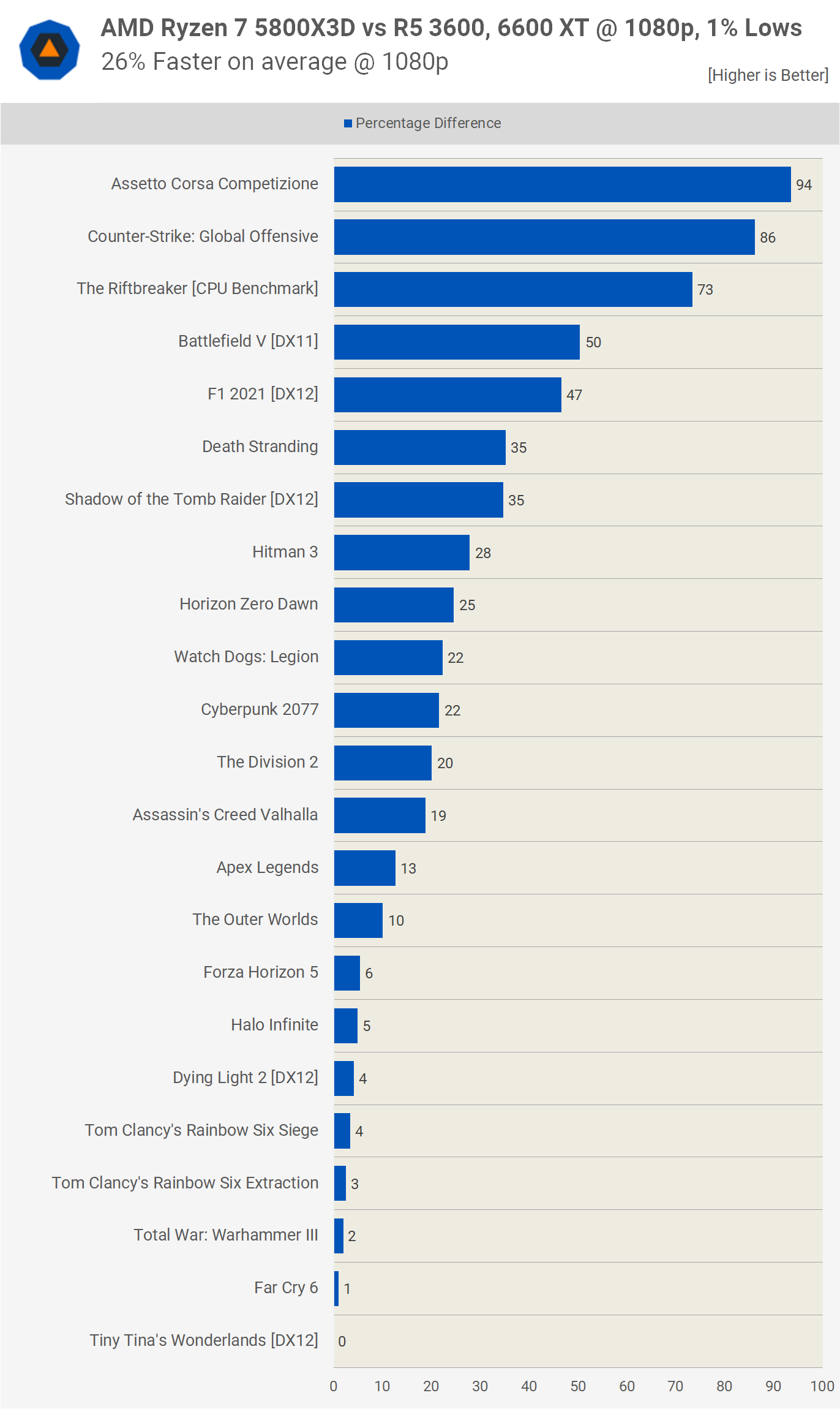
Of course, if you don't have the GPU to unleash the 5800X3D, or you're not interested in using low quality settings, the gains are going to be a lot smaller and we see that with the 6600 XT. That said, heavily CPU bound titles such as ACC or CS:GO will greatly benefit from the upgrade to the 5800X3D regardless.
What We Learned
Assuming you have a capable GPU, and if you are targeting very high FPS gaming at lower quality settings, perhaps for competitive shooters, then Ryzen 5 3600 owners stand to gain a lot of extra performance by upgrading to the 5800X3D. But that's like the perfect scenario for that upgrade.
We were a bit puzzled when many R5 3600 owners requested this comparison. After all, we're talking about a 3-year-old Ryzen 5 processor that started life at $200 and was often sold for much less. So why would these buyers be interested in a CPU upgrade that costs twice as much?
But having thought about it, here's some reasoning behind it. First, had you invested in an Intel platform with the aim of upgrading every 3-5 years when it makes sense, you'd be faced with having to buy a new motherboard anyway. Add at least $100 there or $150 if you want a decent board. Add to that the cost of a $200 - $250 CPU, and you're almost there at the asking price of the 5800X3D.
Then there's the upgrade itself. We know most of you will want to upgrade your graphics card when you can get a 40 - 50% uplift at a similar price, but achieving that kind of improvement for gaming from a CPU is almost unheard of.
AM4 is also at the end of the line, so you can either upgrade now and still enjoy big performance gains, or wait around until Zen 4 makes sense and then dump your platform for a full upgrade, and it's not even clear if the first wave of Zen 4 CPUs will be faster than the 5800X3D for gaming. And of course, you'll need DDR5 memory, making that upgrade more expensive.
So if you've got 2-3 years out of the Ryzen 5 3600 and are now able and willing to go all out on the Ryzen 7 5800X3D, how much of an upgrade is the fastest AM4 CPU for gaming? It turns out, a lot faster, as we just saw and for those running into CPU bound situations, the 5800X3D will solve that while seeing you out for at least the next 2-3 years.
Normally we'd recommend the Ryzen 5 5600 as a smart Zen 3 upgrade, but as we've found for 3600 owners, it's not a huge step forward and in many instances the performance uplift is going to be fairly negligible. After all, it was only 17% faster on average at 1080p using a Radeon RX 6950 XT whereas the 5800X3D was 46% faster.
If you already have a Zen 2-based Ryzen 5, 7 or 9 processor and you're primarily gaming, you will want at least a Ryzen 7 5700X that's currently selling for $250, but as we found recently that's only about 5% faster than the 5600, so at that point you might as well go the full hog, get the 5800X3D and be done with it. And we think that's where many gamers are at right now.
